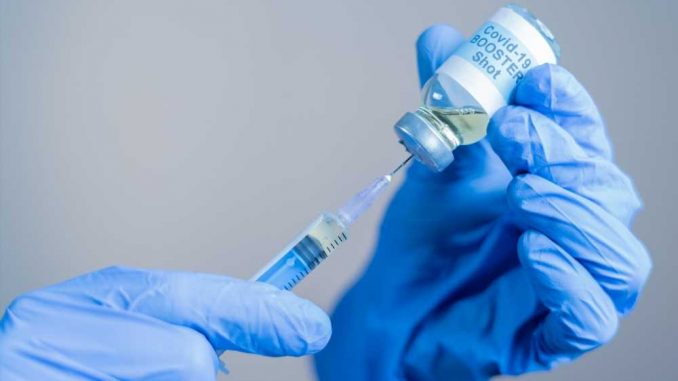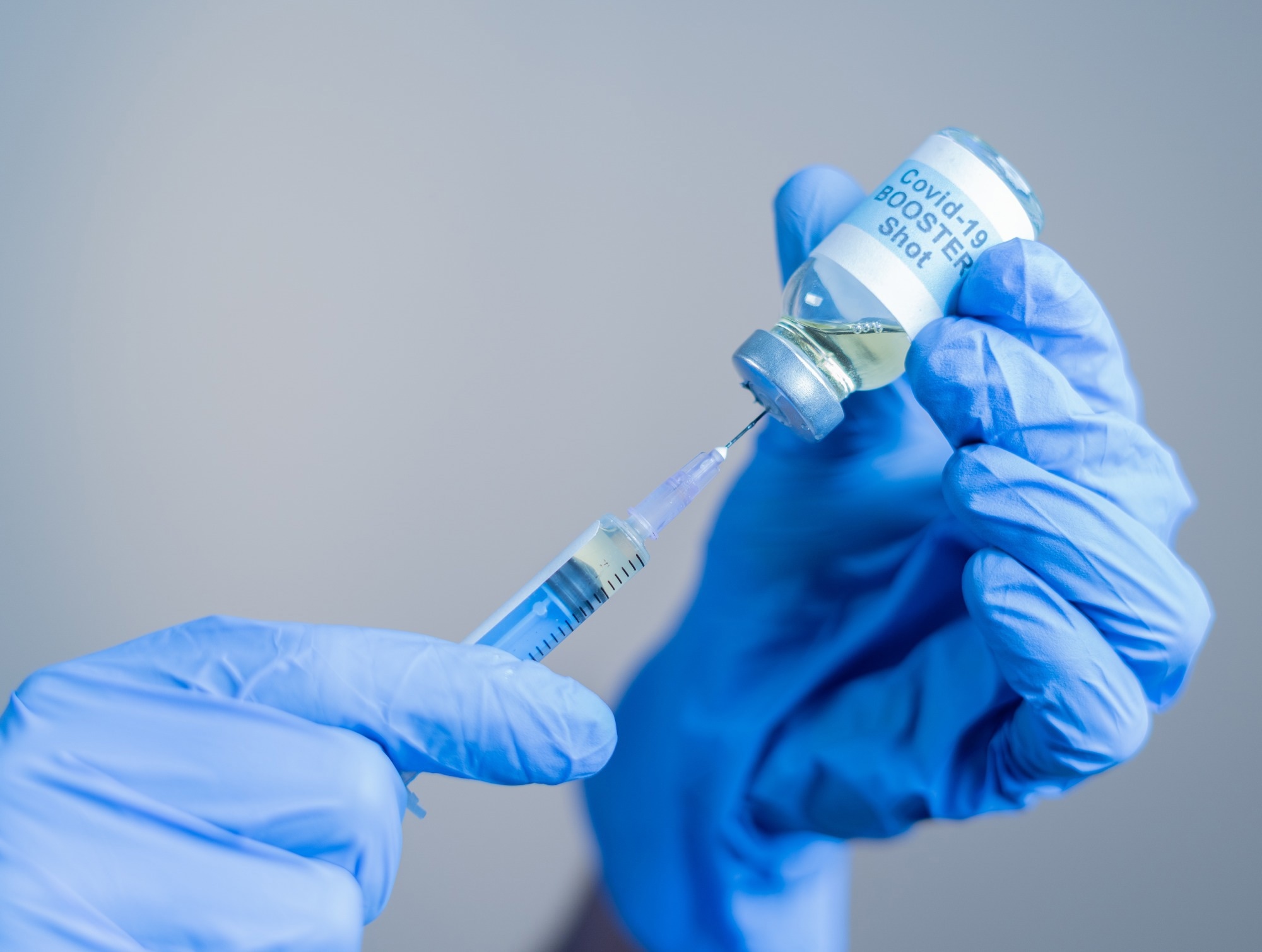

 *Important notice: medRxiv publishes preliminary scientific reports that are not peer-reviewed and, therefore, should not be regarded as conclusive, guide clinical practice/health-related behavior, or treated as established information.
*Important notice: medRxiv publishes preliminary scientific reports that are not peer-reviewed and, therefore, should not be regarded as conclusive, guide clinical practice/health-related behavior, or treated as established information.
In a recent study posted to the medRxiv* preprint server, researchers assessed the effectiveness of a severe acute respiratory syndrome coronavirus 2 (SARS-CoV-2) bivalent booster vaccine against severe SARS-CoV-2 infection outcomes.

Background
In 2022, bivalent SARS-CoV-2 vaccines comprising messenger ribonucleic acid (mRNA) encoding the spike proteins of the SARS-CoV-2 original strain and the SARS-CoV-2 Omicron variant were created in response to the advent of new SARS-CoV-2 variants with immune evasion capabilities.
In September 2022, the European Medicines Agency approved the first bivalent vaccines, which were subsequently recommended in Finland to be employed as a booster dose for all individuals aged 65 years or older and those aged between 18 and 64 years with underlying medical problems predisposing them to severe coronavirus disease 2019 (COVID-19).
In prior research, bivalent vaccinations have been shown to boost protection against severe disease outcomes. The duration of this protection, however, is still unknown. Hence, research predicting the long-term efficacy of bivalent immunizations is required as policymakers consider recommending a second bivalent booster.
About the study
In the present study, researchers compared the probability of severe COVID-19 outcomes between individuals who were and were not vaccinated with the bivalent COVID-19 vaccine.
The study cohorts involved 1,197,700 individuals aged between 65 and 120 years and 444,683 chronically sick people aged between 18 and 64 years. Before the trial, only a small part of each group was diagnosed with SARS-CoV-2 positivity. Almost 58% of the senior cohort and 37% of the chronically ill population were vaccinated against the influenza virus in 2022–2023. During the trial, 627,378 elderly and 66,871 chronically sick individuals were vaccinated with a SARS-CoV-2 bivalent booster vaccine.
Furthermore, almost one-third of the bivalent-vaccinated persons received Comirnaty BA.1, and the remaining two-thirds were vaccinated with Comirnaty BA.4-5. Bivalent Spikevax vaccinations were utilized in minute dosages.
Results
The median period since SARS-CoV-2 bivalent vaccination at the end of the follow-up period was 75 days among the elderly and 73 days 52 among the chronically ill. In the elderly cohort, the team found 1,721 hospitalizations owing to COVID-19, 1002 deaths because of COVID-19, and 809 mortalities where COVID-19 was a contributory cause. During the initial 14 to 30 days and 31 to 60 days after immunization, a bivalent booster reduced the likelihood of COVID-19-related hospitalization, mortality from COVID-19, and mortality to which COVID-19 was a contributing aspect. The hazard ratio (HR) estimates associated with the aforementioned results were 0.74, 0.74, and 0.42 in 61 to 90 days post-vaccination, respectively.
When classified by age, the HRs for those aged between 65 and 79 and those between 80 and 120 years were comparable. Both the BA.1 and BA.4-5 bivalent vaccinations lowered the probability of severe COVID-19 outcomes with comparable HRs. Among the chronically sick, the team observed hospitalizations owing to COVID-19, 16 deaths because of COVID-19, and 18 deaths wherein COVID-19 was a contributing cause. The estimated HR of hospitalization because of COVID-19 was 0.82 for 14 to 30 days after bivalent immunization and 1.57 for the following 30 days.
In examining negative control outcomes, the team identified 9447 visits to the emergency room owing to injury among elderly persons and 2173 visits among the chronically ill. There was no difference in injury risk between individuals who were and were not vaccinated with a bivalent vaccine. Nonetheless, chronically unwell individuals appeared to have a modestly greater risk of harm.
Conclusion
The study findings showed that bivalent boosters lowered the incidence of hospitalization and death owing to COVID-19 in older persons but not in adults of working age having chronic illnesses. Since symptoms of waning efficacy were detected 60 days after bivalent vaccination, the researchers believe that additional booster vaccines for the elderly could be considered. Given the pandemic condition and economic evaluations, it is necessary to consider the necessity for additional booster vaccinations.
*Important notice
medRxiv publishes preliminary scientific reports that are not peer-reviewed and, therefore, should not be regarded as conclusive, guide clinical practice/health-related behavior, or treated as established information.

 *Important notice: medRxiv publishes preliminary scientific reports that are not peer-reviewed and, therefore, should not be regarded as conclusive, guide clinical practice/health-related behavior, or treated as established information.
*Important notice: medRxiv publishes preliminary scientific reports that are not peer-reviewed and, therefore, should not be regarded as conclusive, guide clinical practice/health-related behavior, or treated as established information.
- Preliminary scientific report. Eero Poukka, Sirkka Goebeler, Hanna Nohynek, Tuija Leino, Ulrike Baum. (2023). Bivalent booster effectiveness against severe COVID-19 outcomes in Finland, September 2022 – January 2023. medRxiv. doi: https://doi.org/10.1101/2023.03.02.23286561 https://www.medrxiv.org/content/10.1101/2023.03.02.23286561v1
Posted in: Medical Science News | Medical Research News | Disease/Infection News
Tags: Chronic, Coronavirus, Coronavirus Disease COVID-19, covid-19, Efficacy, Immunization, Influenza, Mortality, Omicron, Pandemic, Research, Respiratory, Ribonucleic Acid, SARS, SARS-CoV-2, Severe Acute Respiratory, Severe Acute Respiratory Syndrome, Syndrome, Vaccine, Virus

Written by
Bhavana Kunkalikar
Bhavana Kunkalikar is a medical writer based in Goa, India. Her academic background is in Pharmaceutical sciences and she holds a Bachelor's degree in Pharmacy. Her educational background allowed her to foster an interest in anatomical and physiological sciences. Her college project work based on ‘The manifestations and causes of sickle cell anemia’ formed the stepping stone to a life-long fascination with human pathophysiology.
Source: Read Full Article